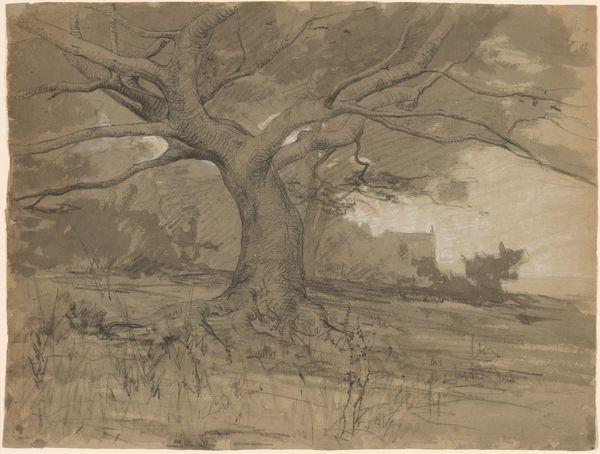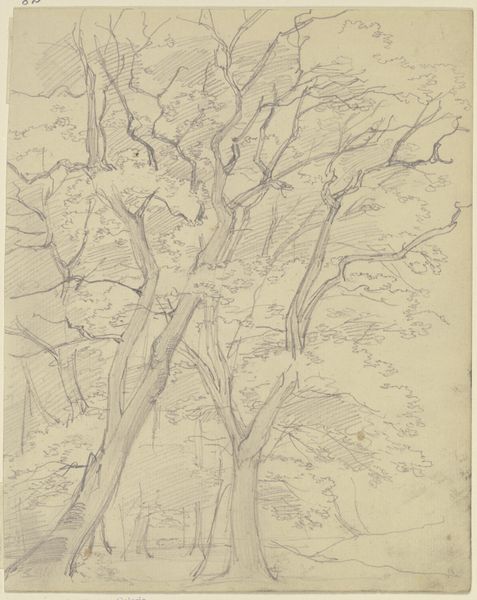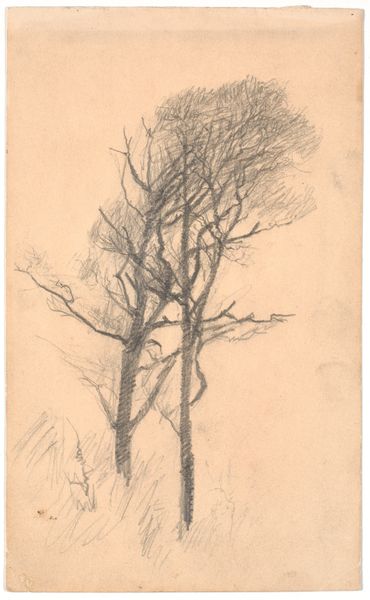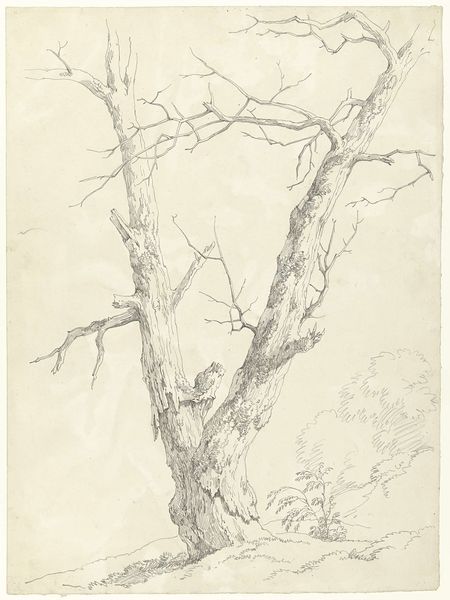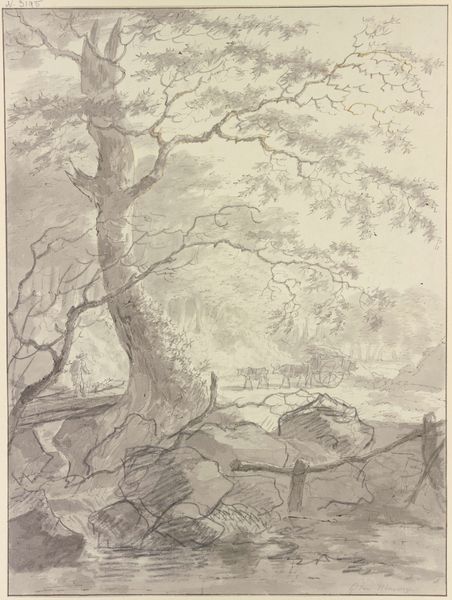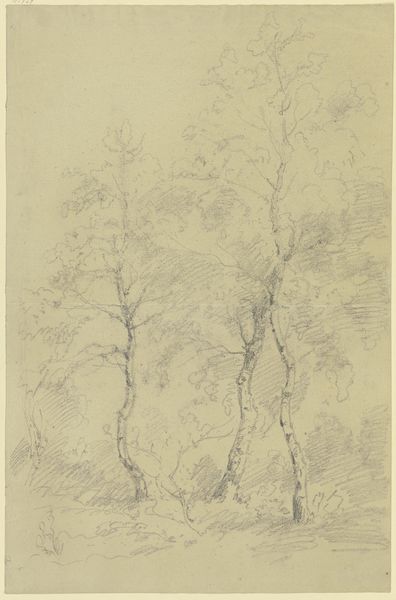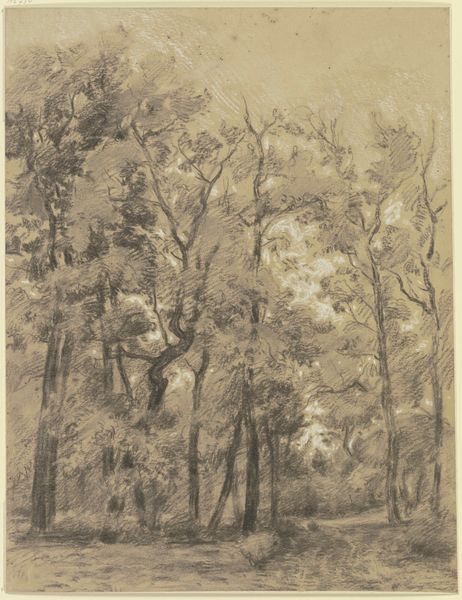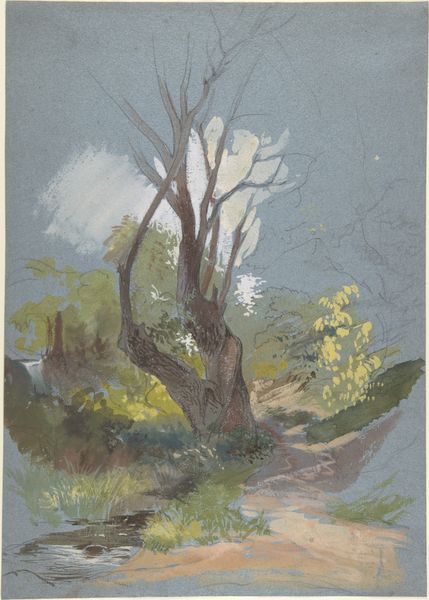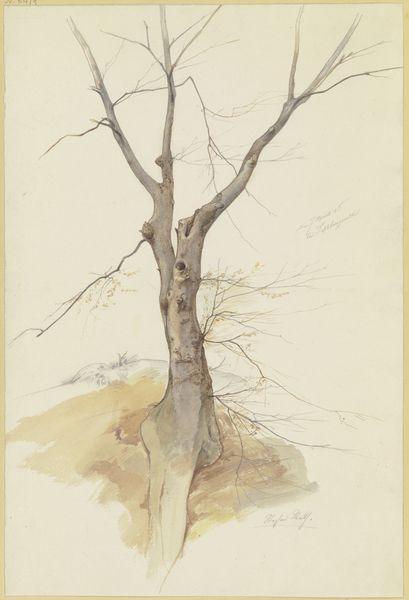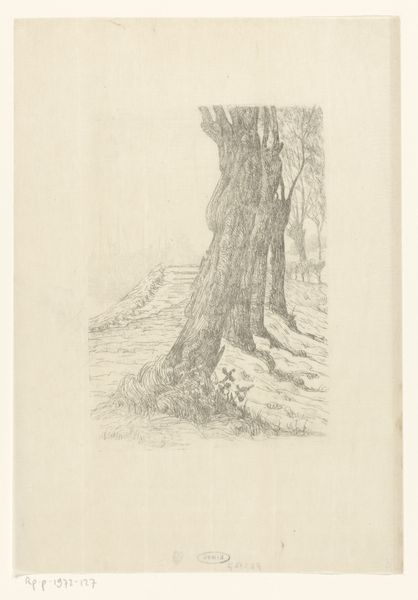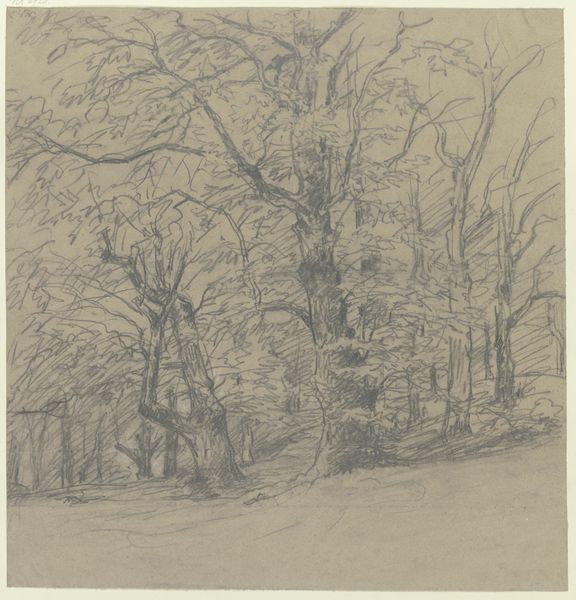
drawing, pencil
#
pencil drawn
#
drawing
#
16_19th-century
#
pencil sketch
#
landscape
#
german
#
pencil drawing
#
romanticism
#
pencil
#
realism
Copyright: Public Domain
Curator: Ah, this pencil drawing, "Alte Eiche in einer Waldlichtung,"— Old Oak in a Forest Clearing—presents a compelling vision. It’s by Hermann Gollner and, although undated, its style places it firmly within the 19th century German Romantic tradition. It practically whispers of sylvan secrets! Editor: It certainly does. My first thought? It's subdued, almost haunting. The monochrome adds a layer of… well, not exactly gloom, but perhaps pensive quiet. And you can really see the pencil work; the hatching feels deliberate and exposes the materiality of its making. Curator: Exactly! The lone oak tree is a very loaded symbol. Think of it as an emblem of steadfastness, endurance, even the German national character—powerful roots going deep into the soil, resisting the winds of change! Editor: And resisting time itself, presumably? But let's consider the pencil itself. A readily available, relatively inexpensive material. Its usage democratizes art-making. Who was Gollner making this for? Is it a study, a preparatory sketch for something grander? Curator: Perhaps. Yet, pencil sketches gained real popularity precisely during the Romantic era. Thinkers and artists valued the directness, the unfiltered connection to nature and feeling. This wasn’t always about serving some future masterwork, but documenting lived experience with an aura of immediacy. Editor: I suppose so. And that connects, certainly, to the consumption. You have these smaller scale pencil works as things for a rising middle class to collect—picturesque scenes readily displayed within the domestic sphere. Easy to make, easy to consume! Curator: Absolutely. Consider also the very conscious interplay of light and shadow— the *Lichtung*, that clearing, where a glimpse of light dramatically underscores the weightiness of the oak’s ancient form. It echoes something eternal—the soul speaking through the landscape. Editor: While I'm always wary of veering into notions of national character, the skill and material execution speaks volumes. It encourages one to question how notions of high art might eclipse very compelling art making that isn't always "painting" or "sculpture." Curator: A fitting end-note! Gollner's unassuming scene shows how a humble material and object—a tree!—can speak powerfully to human connection with time, place, and the deep symbolism inherent in nature itself. Editor: I leave here reconsidering what "landscape" could or should signify and grateful that this "minor" artwork grants that sort of productive critical access.
Comments
No comments
Be the first to comment and join the conversation on the ultimate creative platform.
